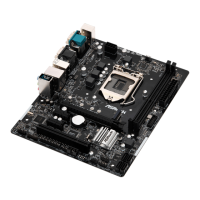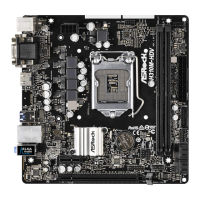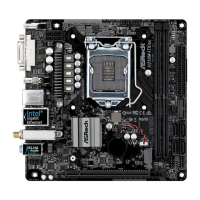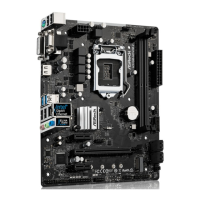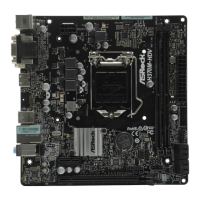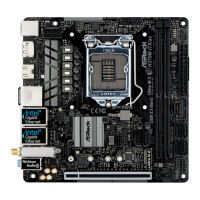
Do you have a question about the ASROCK H310CM-HDV/M.2 SE and is the answer not in the manual?
| Form Factor | Micro ATX |
|---|---|
| Socket | LGA 1151 |
| Chipset | Intel H310 |
| Max Memory | 32GB |
| PCIe 3.0 x16 | 1 |
| PCIe 2.0 x1 | 1 |
| PCI Express x1 | 1 |
| LAN | Gigabit LAN |
| LAN Chipset | Realtek RTL8111H |
| Memory Standard | DDR4 |
| Storage Interfaces | 4 x SATA3, 1 x M.2 |
| USB 3.1 Gen1 | 4 (2 front, 2 rear) |
| Video Outputs | HDMI |
| Audio | Realtek ALC887 Audio Codec |
| RAID Support | RAID 0/1/5/10 |
| Memory Slots | 2 x DIMM |
| USB 2.0 | 6 x USB 2.0 Ports (4 Front, 2 Rear) |
Lists the items included in the motherboard package.
Details the technical specifications of the motherboard.
Illustrates the physical layout of motherboard components.
Describes the input/output ports on the rear panel.
Important safety and handling precautions before installation.
Step-by-step guide for CPU installation.
Instructions for installing the CPU cooler.
Guide for installing RAM modules.
Information on using PCI Express slots.
Explanation of jumper configurations.
Details on motherboard headers and connectors.
Guide for installing M.2 SSD modules.
How to use the Auto Driver Installer for driver installation.
Step-by-step guide for initial driver installation.
Instructions for updating existing drivers.
Overview of the A-Tuning utility.
Steps to install the A-Tuning utility.
How to use the A-Tuning utility features.
Guide to the Live Update & APP Shop.
Explanation of the ASRock APP SHOP interface.
How to download and install apps from the APP SHOP.
How to update BIOS and drivers via the APP SHOP.
Configuration options for the APP SHOP.
How to enable USB ports for Windows 7 installation.
Introduction to the UEFI SETUP UTILITY.
Explanation of the EZ Mode interface.
Overview of the Advanced Mode in BIOS.
Description of the UEFI menu bar options.
Explains keyboard shortcuts for BIOS navigation.
Overview of the Main screen in UEFI Setup.
Details on overclocking settings in BIOS.
Access to advanced system configurations in BIOS.
Settings related to the CPU in BIOS.
Settings related to the chipset in BIOS.
Settings for storage devices in BIOS.
Settings for Super IO devices in BIOS.
Settings related to ACPI power management.
Settings for USB devices in BIOS.
Settings for Trusted Computing features.
Access to BIOS utility tools.
Monitoring hardware status in BIOS.
BIOS security settings and password management.
Configuring system boot options and priority.
Options for saving or discarding BIOS changes and exiting.


